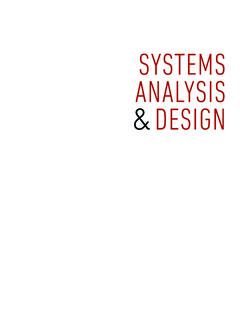Transcription of Managing and Leading Today’s Police - Pearson
1 Managing and Leading Today s PoliceChallenges, Best PraCtiCes, & Case 109/10/17 1:14 209/10/17 1:14 PMManaging and Leading Today s PoliceChallenges, Best PraCtiCes, & Case studiesFOURTH EDITIONK enneth J. PeakUniversity of Nevada, RenoLarry K. GainesCalifornia State University, San BernardinoRonald W. GlensorReno, Nevada, Police Department330 Hudson Street, NY NY 309/10/17 1:14 PMVice President, Portfolio Management: Andrew GilfillanPortfolio Manager: Gary BauerEditorial Assistant: Lynda CramerField Marketing Manager: Bob NisbetProduct Marketing Manager: Heather TaylorDirector, Digital Studio and Content Production: Brian HylandManaging Producer: Cynthia ZonneveldManaging Producer: Jennifer SargunarContent Producer: Rinki KaurManager, Rights Management: Johanna BurkeOperations Specialist: Deidra SmithCreative Digital Lead: Mary SienerManaging Producer, Digital Studio: Autumn BensonContent Producer, Digital Studio: Maura BarclayFull-Service Management and Composition: Integra Software Services Pvt.
2 Project Manager: Gowthaman SadhanandhamCover Designer: StudioMontageCover Art (or Cover Photo): Stefano Venturi/123RF, Greg Browning/ShutterstockPrinter/Binder: LSC Communications, Printer: Phoenix Color/HagerstownText Font: Times LT Pro ISBN 10: 0-13-470127-5 ISBN 13: 978-0-13-470127-11 17 Copyright 2019, 2016, 2012 by Pearson Education, Inc. or its affiliates. All Rights Reserved. Manufactured in the United States of America. This publication is protected by copyright, and permission should be obtained from the publisher prior to any prohibited reproduction, storage in a retrieval system, or transmission in any form or by any means, electronic, mechanical, photocopying, recording, or otherwise. For information regarding permissions, request forms, and the appropriate contacts within the Pearson Education Global Rights and Permissions department, please visit of third-party content appear on the appropriate page within the , ALWAYS LEARNING, and [MyAutomotiveLab or MyCJLab or MyCulinaryLab or MyHospitalityLab or MyHVACLab or MyWeldingLab ] are exclusive trademarks owned by Pearson Education, Inc.
3 Or its affiliates in the and/or other otherwise indicated herein, any third-party trademarks, logos, or icons that may appear in this work are the property of their respective owners, and any references to third-party trademarks, logos, icons, or other trade dress are for demonstrative or descriptive purposes only. Such references are not intended to imply any sponsorship, endorsement, authorization, or promotion of Pearson s products by the owners of such marks, or any relationship between the owner and Pearson Education, Inc., authors, licensees, or of Congress Cataloging-in-Publication DataNames: Peak, Kenneth J., 1947- author. | Gaines, Larry K., author. | Glensor, Ronald W., : Managing and Leading today s Police : challenges, best practices, & case studies / Kenneth J.
4 Peak, University of Nevada, Reno, Larry K. Gaines, California State University, San Bernardino, Ronald W. Glensor, Reno, Nevada, Police titles: Police supervision and managementDescription: Fourth edition. | Upper Saddle River, New Jersey: Pearson Education, [2019]Identifiers: LCCN 2017031189 | ISBN 9780134701271 | ISBN 0134701275 Subjects: LCSH: Police Supervision : LCC P39 2019 | DDC dc23 LC record available at 409/10/17 1:14 PMDEDICATIONSR obert Browning wrote that [There] points in the adventure of the diver: one when a beggar, he prepares to plunge. Two when a prince, he rises with his pearl. (Paracelsus, Part I: Paracelsus Aspires, 1835); I dedicate this fourth edition to those persons who aspire to plunge into criminal justice leadership positions which today are surely the most challenging and difficult roles our society has to offer.
5 K. my wife Jean, my children Ashley, Courtney, and Cody; and to my grandchildren Braedon, Luke, Deaken, Chloe, Kai, Ashton, and Cezanne. Projects such as this have stolen valuable time from them. L. K. my wonderful and supportive family: wife Kristy, daughter Breanne and son Ronnie, their spouses Derek and Katie, and grandchildren Addison, Chloe, Claire and Heidi. And to my ever-caring parents Charles and Helga, whose passing this year we all mourn. R. W. 509/10/17 1:14 PMCONTENTS IN BRIEFC hapter 1 Leading and Managing Today s Police : Challenges and Opportunities 3 chapter 2 The Dynamics of Police Organizations: Structure and theories 19 chapter 3 leadership and Motivation: What Works 39 chapter 4 Communication, Negotiation, and Conflict Resolution 65 chapter 5 Human Resource Management: The Foundation for an Effective Police Department 87 chapter 6 Officers Rights, Discipline, and Liability: A Legal and Policy-Driven Framework 111 chapter 7 leadership Roles in Labor Relations: Navigating the Waters of Police Unionization 133 chapter 8 Financial Administration: Doing More with Less Since the Great Recession 145 chapter 9 Ethics and Accountability.
6 Building a Culture of Integrity and Trust 163 chapter 10 Community Policing and Problem-Solving: Addressing Crime and Disorder 178 chapter 11 Officer Wellness, Safety, and Stress: Identifying and Managing Harms 193 chapter 12 Police Productivity: Improving Performance 205 chapter 13 Managing Homeland Security and Critical Events 229 chapter 14 Technologies for the Tasks: Tools for Today s Police Leaders 249 Appendix 267 Index 609/10/17 1:14 PMEXPANDED TABLE OF CONTENTSPart One Organizations as Living Entities 1 chapter 1 Leading and Managing Today s Police : Challenges and Opportunities 3 Student Learning Outcomes 3 Key Terms and Concepts 3 Introduction 4 The Concept of Organizations 4 Police leadership and Management: An Overview 6 leadership 6 Management 6 Police leadership and Management: An Historical Perspective 7 Early Policing Efforts 8 Early Policing in England 8 Early Policing in America 9 Professional Policing 10 Community Relations Policing 11 Community Policing 11 Intelligence-Led Policing 11 Evidence-Based Policing 12 Predictive Policing 12 Police Goals: What Do Police Departments Do?
7 13 Mission Statements 13 Strategic Plans 14 Challenges and Opportunities 15 Challenges to American Policing 15 Black Lives Matter and the Problem of Police Shootings 15 Police Legitimacy and Procedural Justice 16 Militarization of the Police 16 Opportunities for American Policing 16 Police Body-Worn Cameras 16 Enhanced Technology 17 Police Research and Evidence-Based Policing 17 Summary 18 Internet Investigations 18 chapter 2 The Dynamics of Police Organizations: Structure and theories 19 Student Learning Outcomes 19 Key Terms and Concepts 19 Introduction 20 The Development of Organizational Theory and Its Application to Policing 20 Scientific Management 20 Bureaucratic Management 709/10/17 1:14 PMviii EXPANDED TABLE OF CONTENTSA dministrative Theory 23 POSDCORB 23 Weber s Principles of Management 23 Hierarchy of Authority or Chain of Command 23 Span of Control 24 Specialization 24 Delegation of Authority 25 Unity of Command 26 Policies, Procedures.
8 And Rules and Regulations 27 The Emergence of Human Relations Theory 29 Hawthorne Experiments 29 Theoretical Foundation for Human Relations Organizational Theory 30 The Systems Approach 31 Rationales and Purposes of Police Organizational Design 32 Factors That Influence Organization 34 The Informal Organization 34 Police Culture 34 Employee Organizations and Unions 34 Departmental Inertia 34 Contemporary Organizational Strategies 35 Community Policing 35 Matrix Structure 36 Special Operations Units 36 Summary 37 Internet Investigations 37 chapter 3 leadership and Motivation: What Works 39 Student Learning Outcomes 39 Key Terms and Concepts 39 Introduction 40 Police Officials as Leaders 40A Problem of Definition 40 Developing leadership Skills 41 Technical skills 41 Human skills 42 Conceptual skills 42 Authority, Power, and leadership 42 Types of Power 43 Empowerment 43 Applying Mintzberg s View of Leaders 44 The Interpersonal Role 44 The Informational Role 44 The Decision-Maker Role 45 Strategic Thinking and Planning for Strategic Management 45 Planning Cycle 47 Strategic Management 47 Motivation Theory 48 Content theories : Maslow, Argyris, Herzberg, and McClelland 48 Maslow s Hierarchy of Needs 809/10/17 1.
9 14 PM EXPANDED TABLE OF CONTENTS ixArgyris s Maturity Immaturity Theory 50 Herzberg s Motivation-Hygiene Theory 50 McClelland s Achievement, Power, and Affiliation Motives 51 Process theories : Equity Theory and Expectancy Theory 51 Adams Equity Theory 51 Vroom s Expectancy Theory 52 Leading Versus Managing 52 leadership theories 53 Trait Theory 53 Behavioral theories 53 University of Michigan Studies 54 The Ohio State University Studies 54 The Managerial Grid 54 Situational leadership 56 Contingency Theory 58 Typologies of leadership Styles 58 Likert s leadership Systems 58 Engel s Supervisory Styles 60 Leading in Today s Environment 61 Why Leaders Fail 62 Summary 63 Internet Investigations 63 chapter 4 Communication, Negotiation, and Conflict Resolution 65 Student Learning Outcomes.
10 65 Key Terms and Concepts 65 Introduction 66 The Act of Communicating 66A Large Part of the Workday 66 The Communication Process 67 Formal and Informal Communications 68 Barriers to Effective Communication 69 Perceptual Problems 70 Physical Barriers 70 Communicating via Texting and E-mail 71 Media Relations 72 Police Departments and Social Media 73 The Art of Negotiating 74 The Pre-Negotiation Stage 75 Personal Factors Affecting Negotiations 75 Guidelines for Conducting Negotiations 75 Negotiation by Police Managers and Supervisors 76 Coping With Conflict 77 The Nature of Organizational Conflict 77 Levels of Conflict 78 Sources of Conflict in Police Organizations 79 Organizational Causes 79 Interpersonal Causes 80 Managers and Supervisors Roles in Conflict Resolution 80 Summary 83 Internet Investigations 84 909/10/17 1:14 PMx EXPANDED TABLE OF CONTENTSPart Two Managing Human Resources 85 chapter 5 Human Resource Management: The Foundation for an Effective Police Department 87 Student Learning Outcomes 87 Key Terms and Concepts 87 Introduction 88 Human Resource Systems 88 Affirmative Action and Police Departments 88 Recruitment 89 Police Selection or Hiring 90 Minimum Standards 90 Training.












